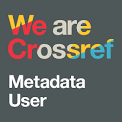Realistic Mathematics Education and REACT Strategy in Context Mathematical Connections
DOI:
https://doi.org/10.51574/ijrer.v3i4.1726Keywords:
Mathematical Connection, REACT Strategy, Realistic Mathematic EducationAbstract
This study aims to describe the process of developing and producing high-quality, realistic mathematics learning devices using the REACT strategy at the junior high school level and their effectiveness in training students' mathematical connection skills. This type of research is known as development research. The learning devices developed in this study are the Mathematics Connection Ability Tests. We developed the test using the 4-D development model, which consists of four stages: define, design, develop, and disseminate. The research subjects for the trial class were 35 students of class VIII-A, and the research subjects for the implementation class were 35 students of class VIII-B. This study used descriptive analysis. The results showed that the tests developed were of excellent quality because they met the criteria of valid, practical, and effective. In addition, realistic mathematics learning with the REACT strategy effectively trains students' mathematical connection skills. This is evident in the aspects of learning quality, the appropriateness of the learning level, the use of incentives, and the amount of time allocated, all of which align with the planning outlined in the learning implementation plan. Furthermore, realistic mathematics learning and the REACT strategy effectively enhance students' mathematical connection skills.
References
Aisah, L. S., & Yulianti, K. (2016). Desain didaktis konsep luas permukaan dan volume prisma dalam pembelajaran matematika SMP. Mathline: Jurnal Matematika dan Pendidikan Matematika, 1(1), 14-22.
Appelbaum, P., & Romero, S. (2023). History of Mathematics and Its Relation to Mathematical Education: Introduction. The Role of the History of Mathematics in the Teaching/Learning Process: A CIEAEM Sourcebook, 103.
Crowford, M. R. (2001). Teaching contextually: Research, rational and techniques for improving student motivation and achievement in mathematics and science. Texas: CORD.
Crawford, M., & Witte, M. (1999). Strategies for Mathematics: Teaching in Context. Educational Leadership, 57(3), 34-38.
Fenanlampir, A., Batlolona, J. R., & Imelda, I. (2019). The struggle of Indonesian students in the context of TIMSS and PISA has not ended. International journal of civil engineering and technology, 10(2), 393-406.
Fredriksen, H. (2021). Exploring realistic mathematics education in a flipped classroom context at the tertiary level. International Journal of Science and Mathematics Education, 19(2), 377-396.
García-García, J., & Dolores-Flores, C. (2021). Exploring pre-university students’ mathematical connections when solving Calculus application problems. International Journal of Mathematical Education in Science and Technology, 52(6), 912-936.
Haji, S., Abdullah, M. I., Maizora, S., & Yumiati, Y. (2017). Developing Students’ Ability Of Mathematical Connection Through Using Outdoor Mathematics Learning. Infinity Journal, 6(1), 11-20.
Hasbi, M., Lukito, A., & Sulaiman, R. (2019, December). Mathematical connection middle-school students 8th in realistic mathematics education. In Journal of Physics: Conference Series (Vol. 1417, No. 1, p. 012047). IOP Publishing.
Hasbi, M., Lukito, A., Sulaiman, R., & Muzaini, M. (2019). Improving the mathematical connection ability of middle-school students through realistic mathematics approach. Journal of Mathematical Pedagogy (JoMP), 1(1), 37-46.
Makonye, J. P. (2014). Teaching functions using a realistic mathematics education approach: A theoretical perspective. International Journal of Educational Sciences, 7(3), 653-662.
Nugraha, A. A. (2018). Analisis koneksi matematis siswa pada materi SPLDV. Suska Journal of Mathematics Education, 4(1), 59-64.
Nurhayati, K. D., Sukestiyarno, Y. L., & Mulyono, M. (2021). The effectiveness of the CTL learning model using REACT strategy with the mind map and the influence of learning independence on students' mathematical connection ability. Unnes Journal of Mathematics Education, 10(3), 194-200.
Romiszowski, A. J. (2024). Producing instructional systems: Lesson planning for individualized and group learning activities. Taylor & Francis.
Sari, D. P., & Rosjanuardi, R. (2018). Errors of Students Learning with React Strategy in Solving the Problems of Mathematical Representation Ability. Journal on Mathematics Education, 9(1), 121-128.
Sari, D. P. (2020). Implementation of REACT strategy to develop mathematical representation, reasoning, and disposition ability. Journal on Mathematics Education, 11(1), 145-156.
Simanjuntak, E., Hutabarat, H. D. M., & Hia, Y. (2019). The effectiveness of test instrument to improve mathematical reasoning ability of mathematics student. In Journal of Physics: Conference Series (Vol. 1188, No. 1, p. 012048). IOP Publishing.
Siregar, N. D., & Surya, E. (2017). Analysis of students’ junior high school mathematical connection ability. International Journal of Sciences: Basic and Applied Research (IJSBAR), 33(2), 309-320.
Stillman, G., Brown, J., & Czocher, J. (2020). Yes, mathematicians do X so students should do X, but it’s not the X you think!. ZDM, 52(6), 1211-1222.
Van den Heuvel-Panhuizen, M., & Drijvers, P. (2020). Realistic mathematics education. Encyclopedia of mathematics education, 713-717.
Verschaffel, L., Schukajlow, S., Star, J., & Van Dooren, W. (2020). Word problems in mathematics education: A survey. Zdm, 52, 1-16.
Widada, W., Herawaty, D., Mundana, P., Agustina, M., Putri, F. R., & Anggoro, A. F. D. (2019). The REACT strategy and discovery learning to improve mathematical problem solving ability. In Journal of Physics: Conference Series (Vol. 1318, No. 1, p. 012081). IOP Publishing.
Zengin, Y. (2019). Development of mathematical connection skills in a dynamic learning environment. Education and Information Technologies, 24(3), 2175-2194.
Downloads
Published
How to Cite
Issue
Section
License
Copyright (c) 2024 ETDC: Indonesian Journal of Research and Educational Review

This work is licensed under a Creative Commons Attribution-ShareAlike 4.0 International License.














1.png)













